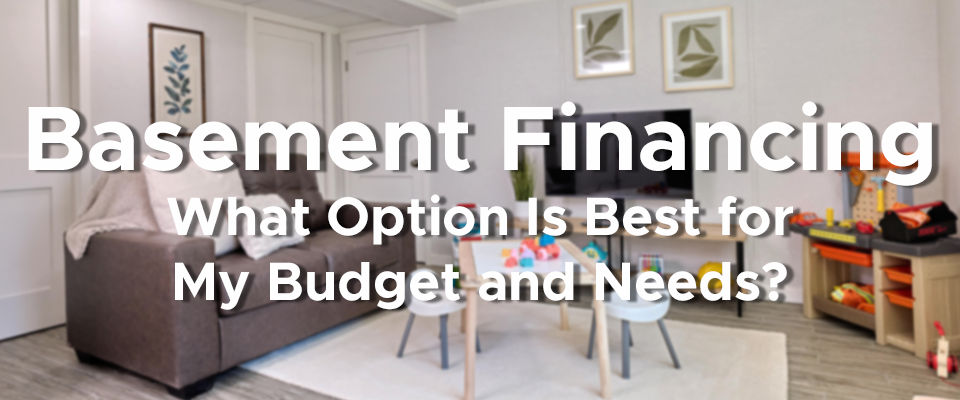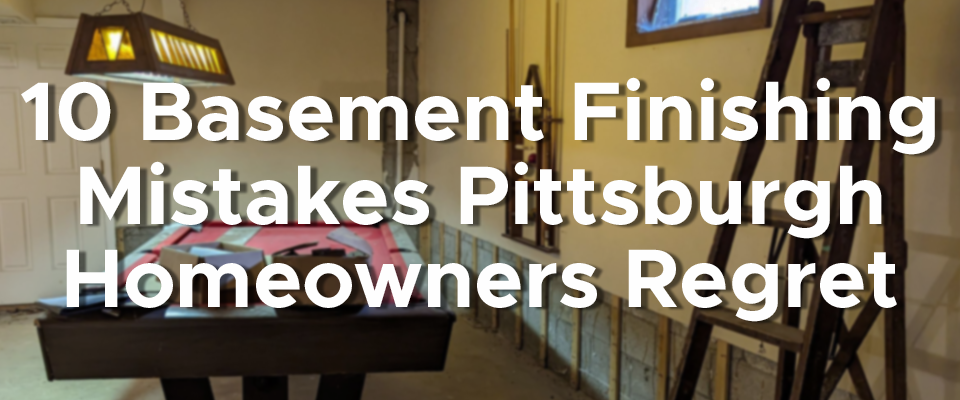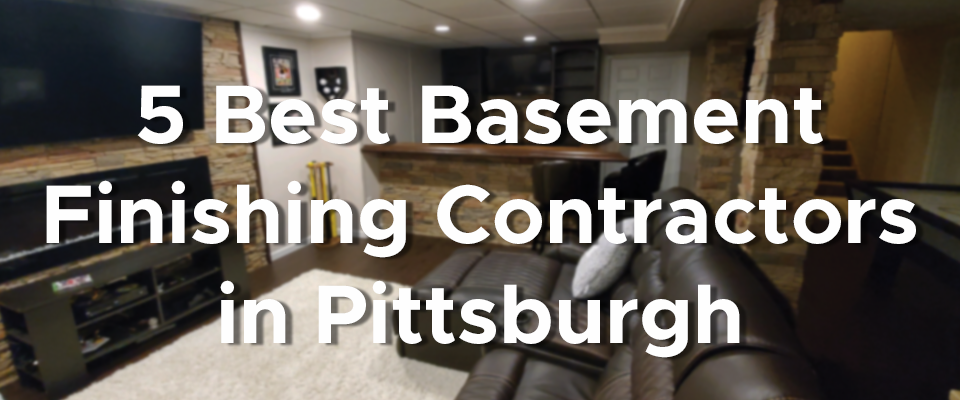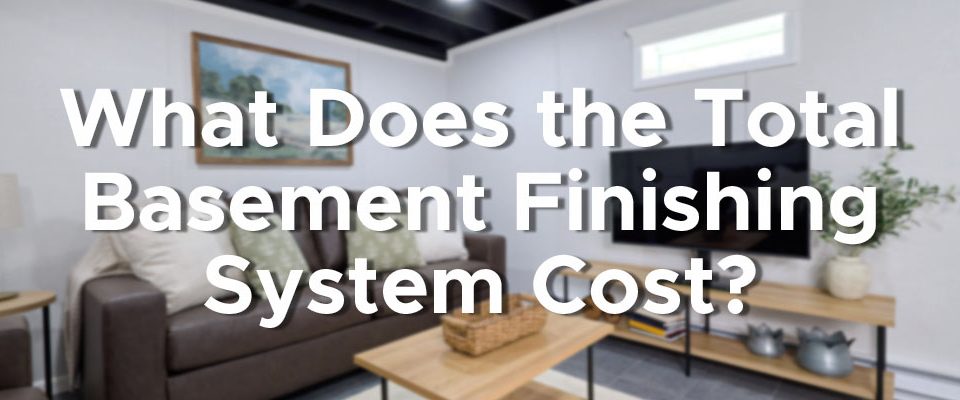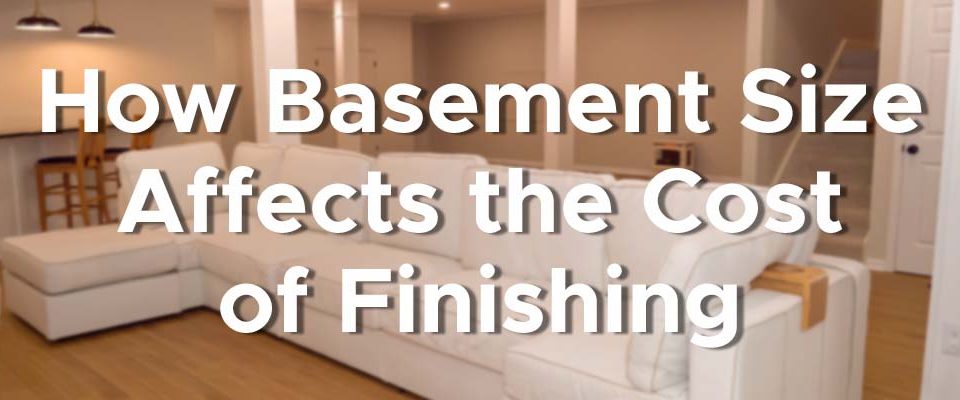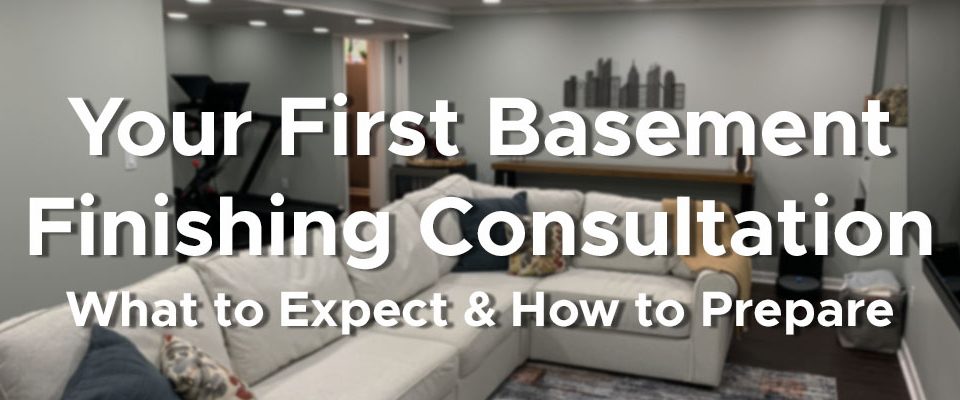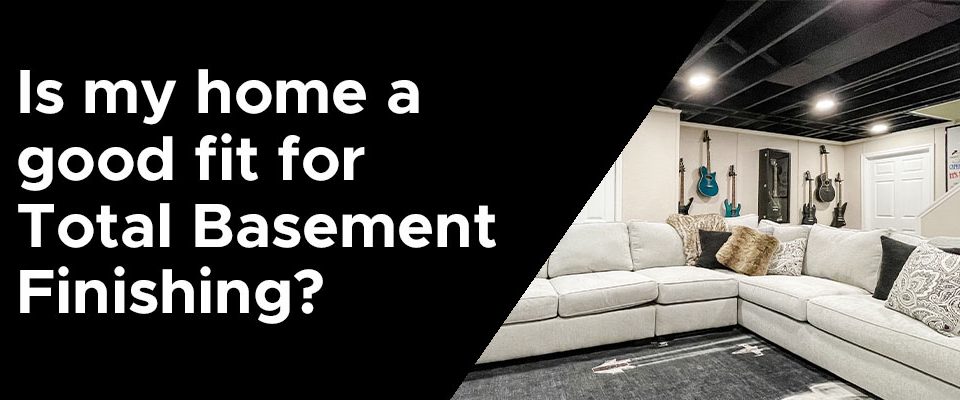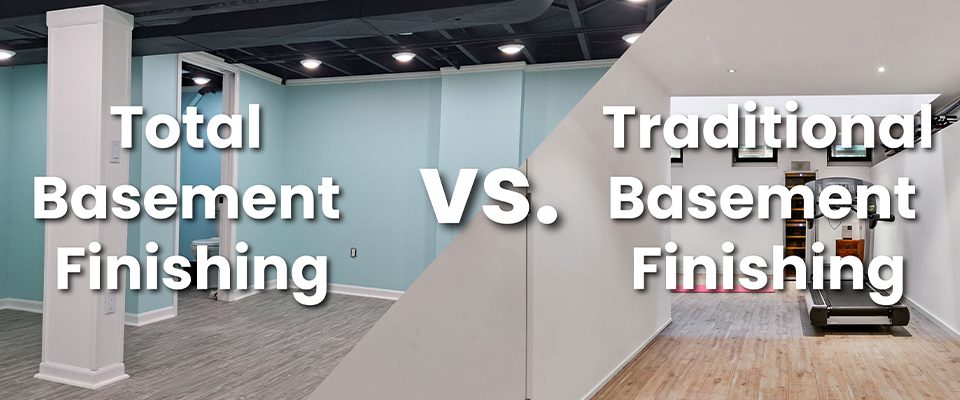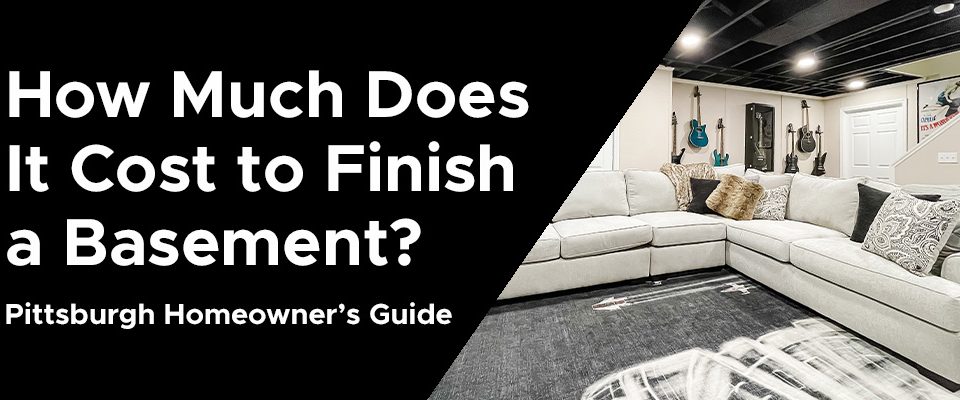Wondering how you'll pay for a basement finishing project?
Worried the price tag will wreck your budget or stall your plans entirely?
You're not alone. Basement finishing is one of the best ways to gain more living space, but it’s also a big investment.
The good news? With the right financing strategy, you won’t need to drain your savings to get it done right. Whether you’re building a home office, family room, or that long-awaited gym, Energy Swing offers flexible payment options to help you fund your dream space without sacrificing financial peace of mind.
Most Energy Swing customers finance their project with a mix of savings and in-house financing through Regions. For a 500–600 sq ft basement, expect to pay $677–$813/month over 12 years.
In this guide, you'll learn real project costs, monthly payment examples, and smart tips to choose a financing plan that fits your goals.
Is Basement Finishing a Smart Investment?
Absolutely. Most of our Pittsburgh-area homeowners finish their basements to stay, not to sell. It’s about creating extra living space that fits their lifestyle:
- A quiet office for remote work
- A separate bedroom for growing teens
- A cozy in-law suite
- A second family room or playroom
With local home prices rising, more people are choosing to reimagine their existing space instead of upgrading to a new home. And Pittsburgh has plenty of older homes with unfinished basements just waiting to be transformed.
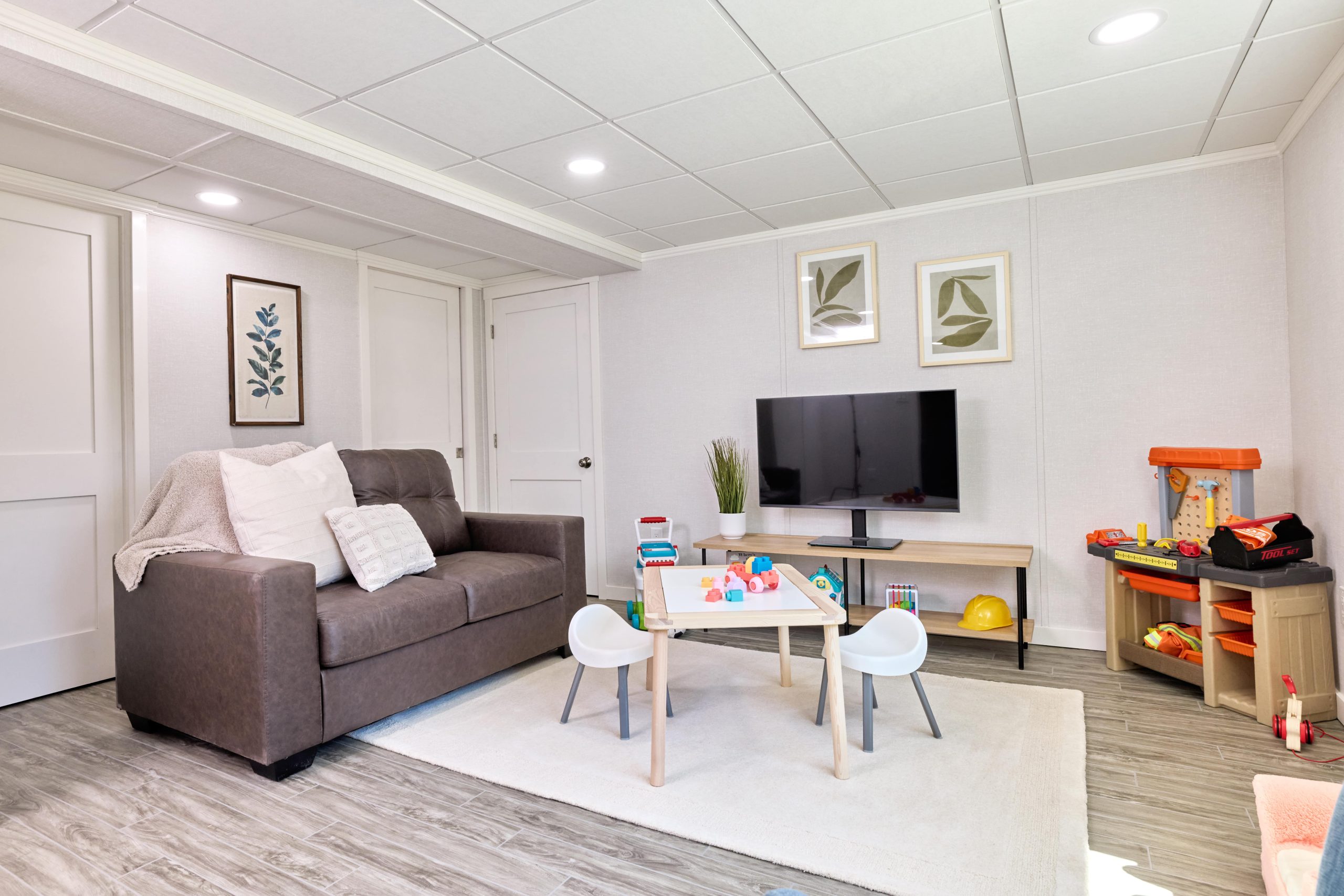
What Makes Energy Swing’s Basement System Different?
Not all finished basements are created equal. And frankly, traditional finishing methods often don’t hold up in below-grade environments like damp, wet, and dark Pittsburgh basements.
At Energy Swing, we use the Total Basement Finishing (TBF) system, which is specifically engineered for basement conditions.
What sets our system apart:
- Inorganic, mold-resistant wall panels that won’t rot or absorb moisture
- Thermal insulation that helps keep your basement warm and energy-efficient
- Durability that lasts for decades, even if your basement experiences a leak or flood
- Easy-to-clean surfaces that still feel finished and comfortable
- A flooring system that provides insulation and is unaffected by water
- A full warranty, so your investment is protected long-term
It’s a system built with Pittsburgh homeowners in mind and built to last.
Want to learn more about what makes our process unique? Here’s how our Total Basement Finishing system works.
How Much Does Total Basement Finishing Typically Cost in Pittsburgh?
Most Energy Swing basement projects fall between $40,000 and $100,000, though that number depends on:
- Square footage: The more you finish, the more it costs
- Custom features: Bars, bathrooms, or home theaters add complexity
- Layout: Open floor plans are more budget-friendly than basements with lots of partitions
- Existing conditions: Waterproofing or electrical upgrades may be needed first
Want a deeper breakdown? Check out our blog on Total Basement Finishing System Cost for Pittsburgh Homeowners.
What Are the Most Common Ways Homeowners Pay for Basement Finishing?
Here’s a snapshot of the most popular payment options we see:
| Payment Method | Pros | Cons |
|---|---|---|
| Personal Savings (Cash) | No interest; full control | Depletes emergency funds |
| Personal Loans | Fast approval from banks or credit unions | May include fees, early payoff penalties, and require strong credit |
| Home Equity Loans / HELOCs | Lower interest rates; higher borrowing limits | Often require appraisals, inspections, and longer approval times, adding to the cost |
| Credit Cards | Good for small deposits; rewards points | High interest (20–30%); not ideal for long-term payoff |
| Dealer Financing (Energy Swing) | Convenient, fast, no collateral required, no early payoff penalty | Limited to our plan terms; based on creditworthiness |
Most of our customers use a mix of savings and dealer financing. Homeowners often pay the deposit by check and finance the rest because they’ve had time to plan and budget for the project.
How Do You Choose the Right Basement Financing Plan?
Financing a basement project isn't one-size-fits-all, and it shouldn’t be. The right plan depends on your financial goals, current budget, and how you plan to use the space.
Here are four key questions to help guide your decision:
- What’s my credit score? Your credit score affects both your approval odds and your interest rate. In general, higher scores mean better rates, but we’ve seen many homeowners qualify with average credit, too.
- What can I afford monthly? Know your number before you borrow. What amount could comfortably fit into your budget without creating stress? Many homeowners opt for longer loan terms to reduce monthly payments and avoid financial strain.
- How long will I be in my home? If you’re planning on staying put for the long haul, finishing your basement is a solid investment. But if you're selling in the near future, it may not make sense to finance a long-term project.
- Do I want to use my savings, or preserve them? Paying in full avoids interest, but financing can let you keep a financial safety net intact. Many homeowners use a mix: pay the deposit in cash, finance the rest.
Reminder: You can always pay off your financing plan with Energy Swing early with no penalties. The majority of our customers do so within 3–5 years, even though our default plan is 12 years for basement projects.
What Are Key Features to Look for in a Basement Finishing Financing Plan?
Once you know financing is the right path, the next step is choosing a plan that won’t surprise you later. It’s not just about the monthly payment, it’s about understanding the full picture.
Here’s what you should pay attention to:
- Interest rate & APR: Lower is better in the long run
- Loan term: A longer loan term = lower payments, but more interest
- Monthly payment amount: Choose one that fits your comfort zone
- Hidden fees & prepayment penalties: Look for transparency
- Deferred or “Same as Cash” offers: Know how interest accrues if you don’t pay on time. Many homeowners are surprised when they get hit with a huge, accrued interest bill when they go past the promotional no-interest period.
- Closing costs or inspections: Common with HELOCs or bank loans.
Choose a plan that supports your goals and won’t leave you stressed about monthly bills.
What Basement Financing Options Does Energy Swing Offer?
We partner with Regions (formerly EnerBank) to offer flexible in-house financing. Here’s what that looks like:
- Loan Term: 12 years (144 months)
- Rates: 8.99% – 15.99% (based on credit)
- No: application fees, closing costs, or early payoff penalties
- Pre-approval is available before or during your consultation
Your approval amount depends on your credit score and debt-to-income ratio. And the loan is unsecured, meaning no lien on your house.
How Much Will I Pay Each Month for Basement Financing?
Here’s a look at typical monthly payments based on finished square footage:
| Size (sq ft) | Estimated Cost | Monthly Payment (12-year term) |
|---|---|---|
| 300–400 | $36,500–$49,000 | $415–$557 |
| 500–600 | $59,500–$71,500 | $677–$813 |
| 700–800 | $82,000–$94,500 | $933–$1,075 |
| 900+ | $103,500+ | $1,172+ |
Please note that the monthly payment amount will vary based on the rate you get approved for.
Only pay interest on what you use. If you’re approved for more than you need, you won’t be charged for the unused amount.
What Mistakes Should You Avoid When Financing Basement Finishing?
- Over-financing: Don’t borrow $75K for a $40K job. Build in a realistic buffer (10–15K), but don’t overextend.
- Credit card reliance: Avoid long-term balances on cards with 20–30% interest. The average APR (annual percentage rate) for a new credit card in the U.S is 24.35%, and it keeps rising each month according to LendingTree.
- Balloon payments: Be cautious of loans with low starting payments that spike later.
- “Too good to be true” offers: If someone promises 0% for 5 years, read the fine print.
- Ignoring project scope changes: Leave room for upgrades or unexpected code issues (like electrical panels from the ‘70s that need replacement)
How Can You Plan Your Basement Project Without Blowing Your Budget?
Here’s how to stay in control:
- Be realistic about what you can afford monthly
- Prioritize your must-haves vs. nice-to-haves (skip the bar for now?)
- Consider splitting payments — pay some in cash, finance the rest
- Don’t forget: You can always add upgrades later
And remember, the best time to build is now. Prices for materials and labor are only trending upward.
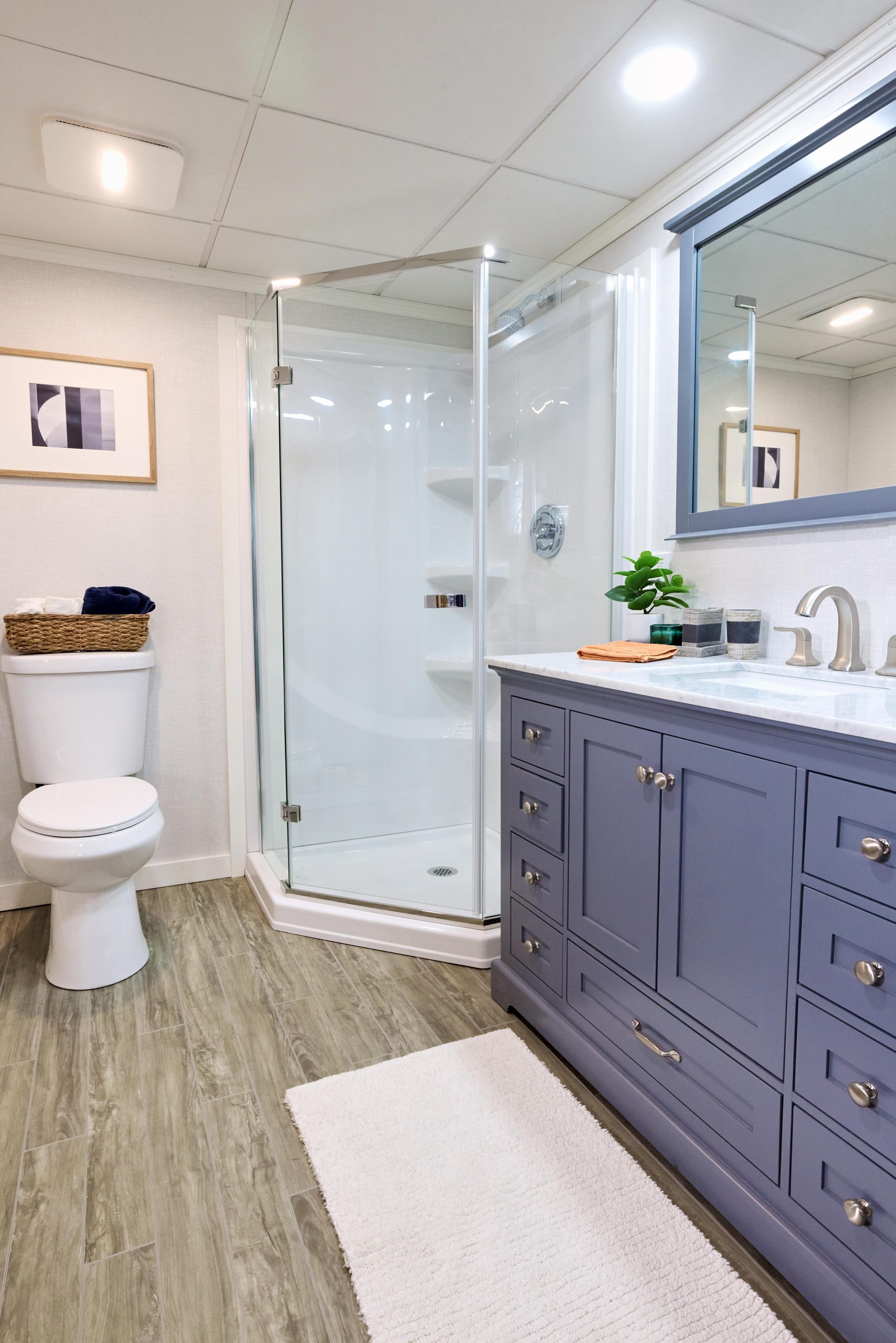
What’s Your Next Step to Get Financing for Your Basement Project?
After getting your basement quote, it’s completely normal to feel a mix of excitement and sticker shock. For many Pittsburgh homeowners, the cost feels like a roadblock, especially when they’re unsure how to pay for it.
Now that you’ve seen the real numbers, common financing options, and how Energy Swing makes payment manageable, you’re better equipped to make a confident decision not just about your project, but also how to budget for it.
Your next step? Schedule a consultation, get preapproved, and walk away with honest answers and real monthly payment estimates. We’re here to help you transform your basement — without sacrificing your financial peace of mind.



